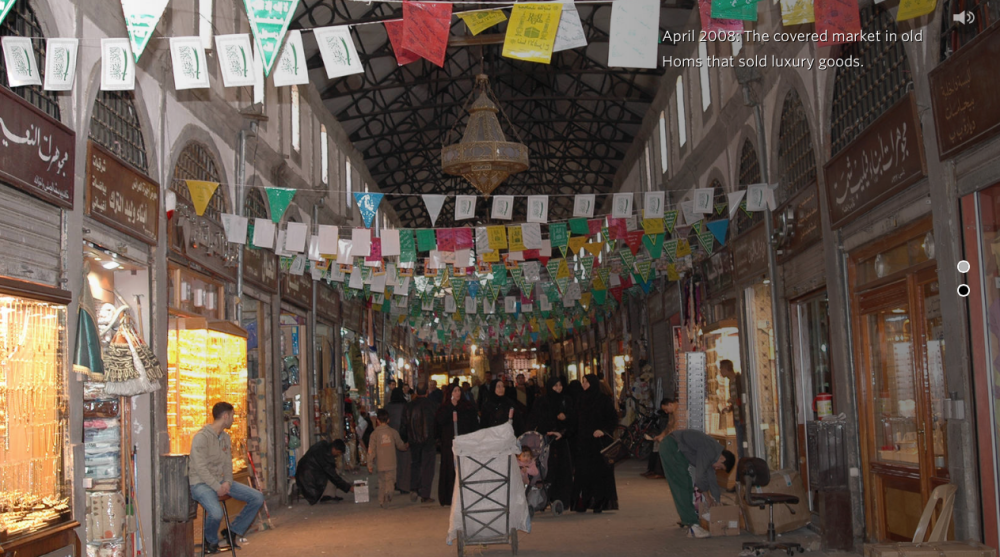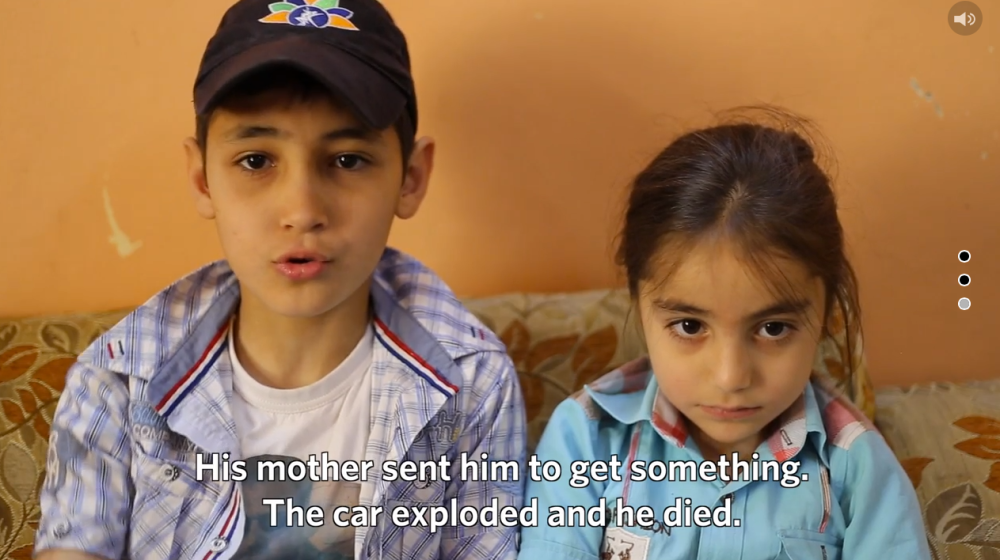The Wall Street Journal’s interactive piece “Syria Shattered,” starts with the voices of Syrians over video of the destroyed city of Homs. “Everyone used to get along,” a man says. Then distinct voices of men, women and children continue, explaining the way things used to be. The voices and video images become faster, more urgent, ending with a haunting quote over a black screen. “This is the story of our life, it used to be beautiful,” it reads.
The piece doesn’t mislead readers. “Syria Shattered” is a story of lives, or, at least what they used to be. The piece takes readers through an interactive history of the country’s demise in three multimedia-rich sections. What makes this story unique, is the way in which it tells Syria’s story. The entire article is told through the perspectives of Syrians on all sides of the conflict and is divided into sections by each family or individual story. To me, this story uses multimedia and web design in an incredibly powerful and purposeful way. Here, the text of the stories are infinitely enhanced by the multimedia elements of the story. When we read about a person for the first time, scrolling down reveals photos and videos of that person. When the story talks about the battle for Homs, the article shows before and after pictures of the city’s main market square.
This piece is simple in its execution. Each section of the story introduces a character and a picture of them. Then, video of that character is activated by scrolling down. The videos all play by themselves, and simple circles to the side of the videos indicate how many videos are left. A simple, black bar advances at the top of the browser as you advance through the article. Yet, the piece remains powerful because of its strong, well-timed use of visuals. Throughout the story, the video and photos of the city and what people remain there speaks for itself. In one photo, a 5-year-old girl is seen holding a gun. Then a video clip jumps to her and her brother talking about seeing a friend of theirs dead in the street. In one of the most chilling video clips in the piece, the story scrolls through three videos of a man walking through his destroyed street and home.
The site is effective in how much emphasis it places on its visual elements, and how little emphasis it places on design. The Wall Street Journal wanted this story to stick with readers through its simplicity, and I believe it succeeded. The only critique I have of the site is with the full screen visual elements. Sometimes scrolling over video would cause the screen to freeze for a moment. The scrolling effect also made some of the visual elements feel a bit jumpy at times. Overall though, “Syria Shattered” is an example of how strong multimedia elements can be used to make a story more real to readers. The story elements scroll effortlessly on the page to allow the reader to focus on the tragedy of the story before them.






Hi Sarah,
This is an excellent, and beautiful piece that you found. Like you said, the multimedia content really brings to life these Syrian’s stories in a way that simple text could not. The design does not interfere or intrude with the story, which is very important and done successfully, I believe. Journalism pieces like this one help to remind us of the humanity of conflict.
Kerri Williams Voyles
LikeLike
I’m sure the Wall Street Journal isn’t the only news organization to cover the lives of Syrians as a result of the revolution, but this package was so well done. As both you and Kerri have pointed out, the text and design are relatively simple, which places the multimedia elements in the center of the narrative. The text included just enough information for people like me who aren’t familiar with Syrian culture and who haven’t followed this conflict from its beginning.
I know automatically starting videos are often a point of contention, but I think they worked very well in this piece, especially since each section started with a video. This set the expectation for readers that media would play on its own. I agree that the decision to rely heavily on videos and photographs makes this story that much more powerful.
I found the navigation the weakest point of this site. Although it is easy to understand a reader must scroll through the story, there was no way to switch between the three parts of this story until you were finished with one part or you found a buried sidebar that provided links to the other parts. As someone who frequently doesn’t have time to finish an entire story all at once, this was frustrating. However, I did really like that links were provided if a reader was interested in reading hard-news coverage of a specific event.
LikeLike